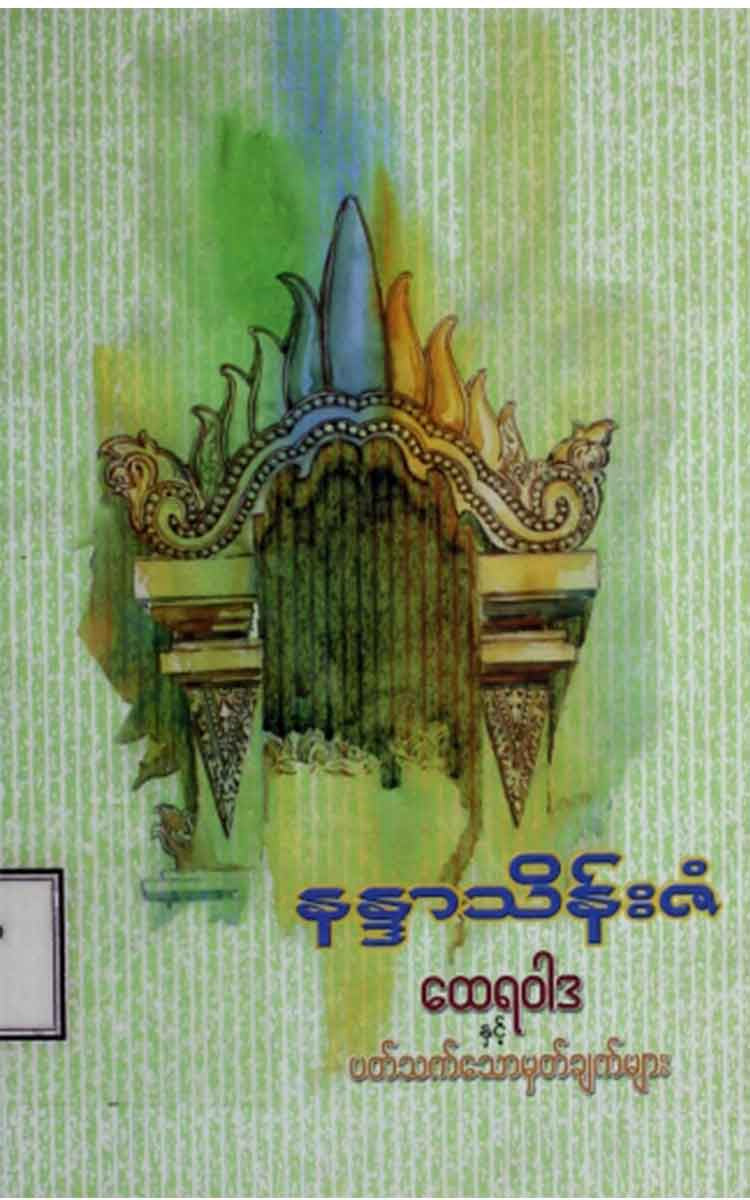Other Websites
Nanda Thein Zan - Comments on Theravada Buddhism
Nanda Thein Zan - Comments on Theravada Buddhism
Couldn't load pickup availability
Introduction
Theravada is
The word “Theravada” in the term “Theravada” refers to the great monks of the first Sangha, such as the Venerable Maha Kassapa. “Vada” can also mean words. It can also mean doctrine. It can also mean a conclusion. The combination of the words “Thera” and “Vada” is explained in the Dipavānsa, written around 350 AD, as “the Pali word of the Buddha, preserved and carried by the Venerable Maha Kassapa and the monks.” (Dipavānsa, 4.90) Theravada refers to the Pali Pitaka, which was compiled by the First and Second Sanghas (Saratta Dipani, 1,135). It is also stated that the Pali Pitaka was called Theravada to distinguish it from the teachings of later sects such as the Mahasamyika (Vimathikika, 1, 30).
Those who continue to preserve and practice the Pali Pitaka so that it is not shaken are called Theravada. The lineage of Theravada monks is called Theravada lineage.
The discourses preached by Gautama Buddha are called Buddha discourses in the Pali Pitaka. The discourses beginning with “Anakaja Tisamsaram” spoken by the Buddha at the time of his enlightenment, in the 78th chapter of the Enlightenment, are considered the first Buddha discourse. The last discourses preached by the Buddha on the eve of his passing away, “Handadanibhikkhave amantayami vav, vayadhamma sankhara, appamadenasampadeta,” are called the Pitsima Buddha discourse. The discourses preached by the Buddha for (45) weeks between the first Buddha discourse and the Pitsima Buddha discourse, are called the Mizzima Buddha discourse.
The Buddha's teachings are the ultimate teachings given by the Buddha, and are also called the Buddhist religion. The teachings that the Buddha has given us to see good and evil, merit and demerit, etc., are also called the Buddhist teachings.
(Some of the teachings that the great disciples of the Buddha preached in the presence of the Buddha during his lifetime were also included in the Pitaka, with the same emphasis as the Buddha's teachings.)
Buddhism The teachings of the Buddha are now called Buddhism. The word “religion” here comes from the root word “baṭh” which means to speak and follow the teachings of the Buddha. However, it is not possible to define the teachings of the Buddha as a religion. Religion is a religion that believes in a Creator and that the universe and all beings are controlled by the Creator. Theravada Buddhism does not accept the concept of a Creator at all. Therefore, Theravada Buddhism is not a religion.
When Westerners came into contact with Buddhism, they called the teachings of Gautama Buddha Buddhism. If the “idea” included in this term is “ism,” it would be difficult to define Buddhism as the “idea” used in communism, socialism, capitalism, laborism, etc. Furthermore, Buddhists often call the acceptance and practice of the Buddha’s teachings, whether by individuals or groups, “idea.” For example, the teachings and practices that great arahants such as Mahakassapa and others have accepted and practiced as the true teachings of the Buddha are called Theravada. The view that the teacher adopted regarding the Buddha’s teachings is called Asariyya. Regarding the Buddha himself, there is no mention of Buddhism in the scriptures.
Moreover, non-Buddhist Western scholars often define Buddhism as a philosophy. They define it as a philosophy because it is based on right knowledge and right actions and is related to human welfare. However, Buddhism does not only present ideological views. It also presents human ethics and practical practices that can be implemented personally. It also specifically indicates the law of liberation from the world.
Buddhism can also be considered a religion of worship, due to the traditional beliefs and practices found among many Buddhists, such as spiritism, and some of the practices found in the gradual formation of Buddhist organizations. However, the terms philosophy and religion are fundamentally Western concepts. Even in the West, these terms have various meanings.
Therefore, it is impossible to define the ideas and practices contained in Buddhism from a Western perspective as either a philosophy or a religion. "Buddhism is not just a religious way of life that contains philosophical explanations."
There are also those who think that if you want to say something, you can say it.” (Buddhism by Kenneth.KS, Chen, P.3).
The term “Buddha Basita” is used in the Pitaka literature, which is close to the meaning of Buddhism. Buddha Basita means the Dhamma preached by the Buddha. The Buddha
The Vinaya Pitaka, the Abhidhamma Pitaka, the Sutta Pitaka, the Dhammapada from the Sutta Pitaka, the Sāriya Pitaka, the Udāna, the Itivuttaka, the Jātaka, the Sutta Nipaka, the Vimanā Sutta, the Peta Vutthū, the Brahmajāla, etc. are all mentioned in the Vinaya Eighth Katha. In addition, the Dhamma preached by the disciples (the Dhamma preached by the disciples) is also given equal importance with the Dhamma preached by the Buddha and is included in the Pitaka. Therefore, the entire Pāli Pitaka can be called the Buddhist (the Buddha Basita).
Those who follow the teachings of the Buddha are often called Buddhists. The term Buddhism is also used to refer to all of the religious practices, beliefs, and teachings of the Buddha, including Buddhist monks and nuns.

